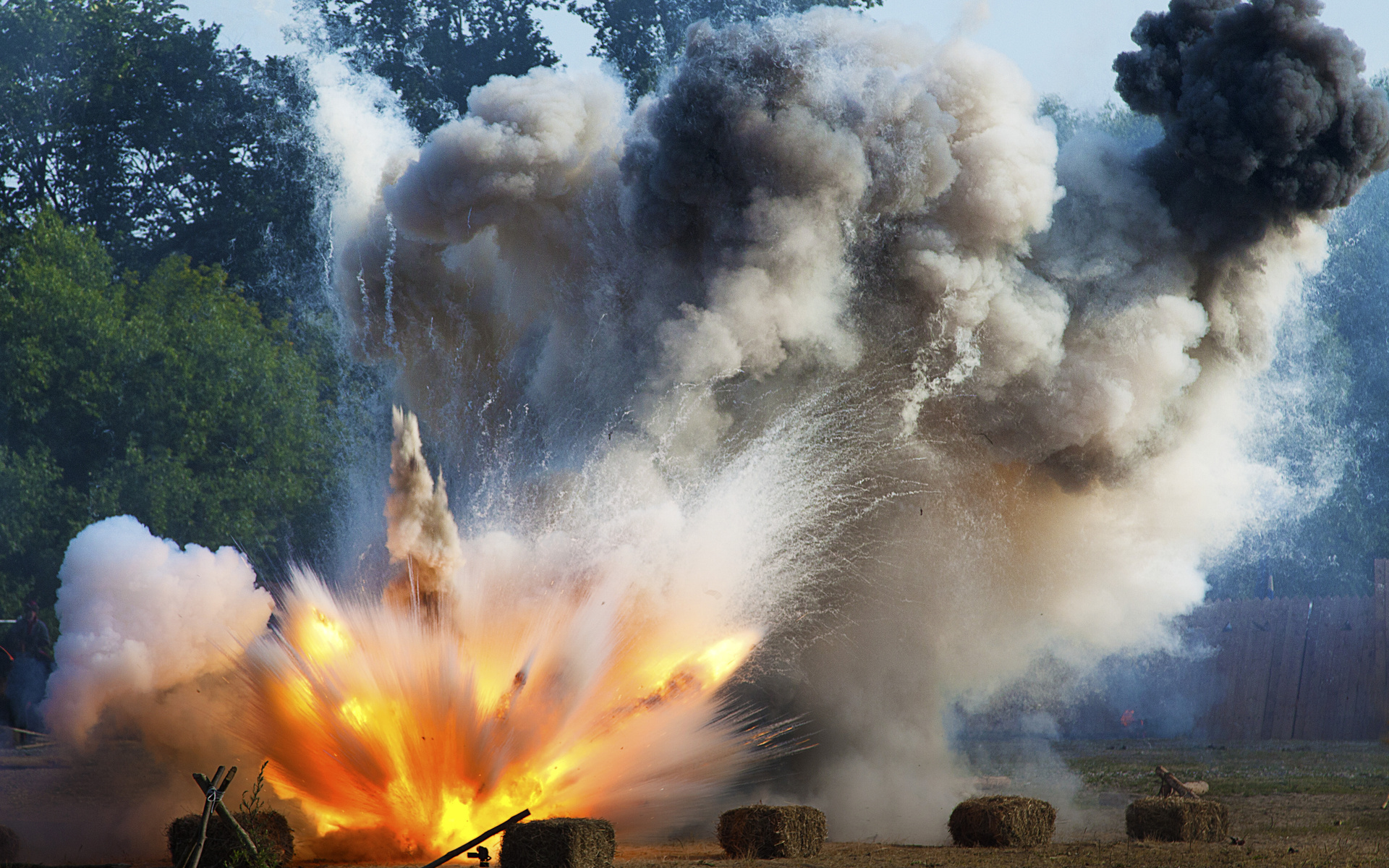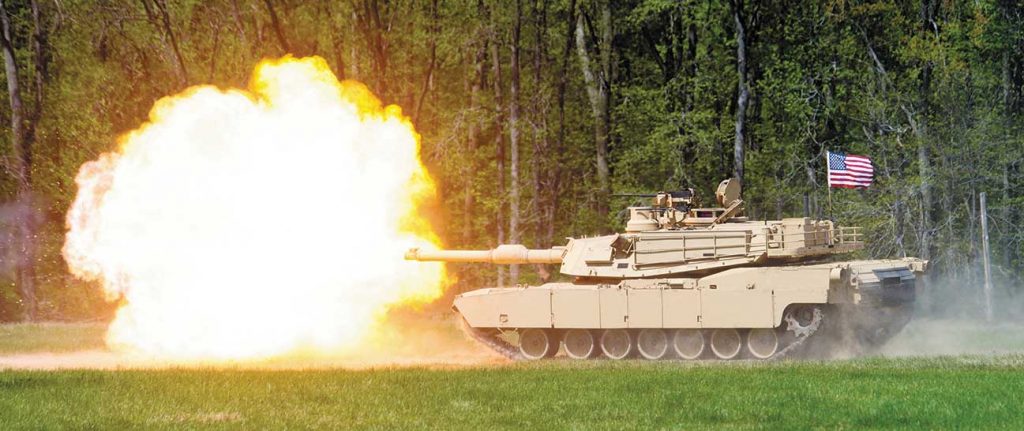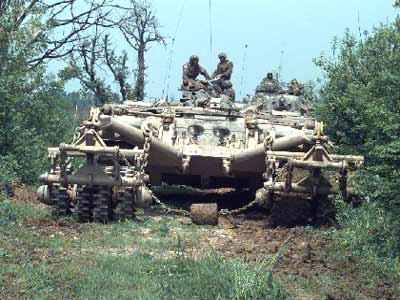
Mitigating the Environmental Impacts of Explosive Ordnance and Land Release
Mine Action Review Policy Brief / Conflict and Environment Observatory
INTRODUCTION
(October 2021) — Environmental considerations are rightly gaining increased prominence and awareness. Environmental experts agree that unprecedented changes in climate and biodiversity are taking place, threatening nature and human livelihoods around the world. The humanitarian community increasingly understands the need to identify and assess how their operations affect the natural environment and to mitigate the negative environmental impacts wherever possible.
In May 2021, the Climate and Environment Charter for Humanitarian Organisations, led by the International Committee of the Red Cross (ICRC) and the International Federation of Red Cross and Red Crescent Societies (IFRC), was opened for signature. The Charter includes seven high-level commitments to guide the humanitarian sector’s response to the climate and environmental crises. The ICRC has also proposed a set of three organisational targets and a roadmap for the implementation of these commitments.
The mine action sector has begun to recognise that in order to follow the humanitarian principle of “do no harm” it must be aware of and take action to mitigate the potential environmental damage that can occur during land release operations.
While an affected community clearly benefits from the removal of explosive ordnance from nearby land, long-term harm may also be caused when environmental mismanagement occurs during clearance operations. Environmental impacts were first reported by the mine action sector more than thirty years ago, and in recent years the sector has begun to engage ever more meaningfully with the topic.
This Policy Brief builds on existing knowledge and research, and aims to outline the key environmental impacts of explosive ordnance contamination and land release operations and the potential impact of climate change on land release. It also offers an overview of the environmental impacts of post-clearance land use; outlines some of the relevant regulatory frameworks and treaty commitments; and emphasises the importance of environmental management. The aim is to present the key issues in an accessible format while offering recommendations of measures that would improve environmental management practices within the sector.
The Policy Brief has bene ted from interviews with clearance operators and other implementing partners, and through written input from stakeholders across the sector, including affected States. It does not lay claim to being comprehensive and it will certainly not be the last word on this complex issue. Rather it offers straightforward guidance, which, it is hoped, will promote discussion and stimulate further research, including more systematic follow-up once land is safely released in order to monitor environmental impacts.
Mitigation measures should be chosen based on their appropriateness to the local context and should be evaluated to assess whether the desired outcomes are being achieved.
This brief uses the term explosive ordnance which, as per the International Mine Action Standards (IMAS) Glossary of mine action terms, definition and abbreviations, encompasses mine action’s response to the following munitions: mines, cluster munitions, unexploded ordnance, abandoned ordnance, booby traps, and improvised explosive devices when their clearance is undertaken for humanitarian purposes and in areas where active hostilities have ceased.

SOIL IS A LIVING ECOSYSTEM AND A FINITE RESOURCE:
ITS LOSS AND DEGRADATION IS NOT RECOVERABLE WITHIN A HUMAN LIFESPAN
In an analysis of cluster bomb strike locations in Lebanon by the UN Environment Programme (UNEP), valuable pasture land was rendered unusable due to the presence of contamination. This in turn led to overgrazing in accessible areas and consequent habitat degradation. In some cases, local farmers were setting res on contaminated areas in the hope this would detonate the cluster munition remnants, allowing them access to their land once again.
Unfortunately, this remedial action exposed the soil to erosion once the vegetation cover was lost. What is more, declining availability of land can increase the intensity of the remaining agricultural production systems where they rely on higher levels of chemicals, fertilisers, pesticides, and mechanisation, causing further degradation of the land.

RISK FROM FOREST FIRES
When items of explosive ordnance detonate they may trigger forest res, and then these res can trigger further explosions, making it even more challenging for fire fighters to extinguish the blaze because of the contamination. Every year in Bosnia and Herzegovina, fire fighters are prevented from accessing forest res due to explosive ordnance contamination.
The village of Slivnica, in the south of the country, had major wild res a few years ago, and when fire fighters attempted to set up a re line, blasts began in the mine field forcing them
to retreat to safety. There have also been instances of res in eastern Syria, Iraq, Lebanon, and in the Palamu Tiger Reserve (PTR) in India being exacerbated by contamination, as extinguishing the blaze became too dangerous for the fire fighters due to the exploding munitions.
While forest res are a natural occurrence within some ecosystems, re seasons are becoming increasingly frequent each year due to climate change and poor land management. Wild res release carbon dioxide and other pollutant gases into the atmosphere, exacerbating global warming.
The resulting smoke and haze can travel miles, creating public health crises as people breathe in unhealthy levels of pollutants. As well as destroying habitat and killing wildlife, uncontrolled wild res can also cause economic damage as property and natural tourist attractions are destroyed, water supplies are polluted, and people are evacuated.

A surge of mutant wildlife followed the Chernobyl nuclear explosion.
RISK TO ANIMALS
Few data exist on the number of animals killed or injured by explosive ordnance each year. But the animals that have been recorded as falling victim to landmines include: brown bears in Croatia; Andean bears and pumas in Colombia; barking bears, clouded leopards, snow leopards, and royal Bengal tigers in India; gazelles in Libya and other parts of North Africa; elephants in parts of Africa, in Thailand and in Sri Lanka; and leopards in Afghanistan. Many of these animals are protected and endangered species.

ENVIRONMENTAL IMPACTS OF LAND RELEASE OPERATIONS
The primary concern of national mine action authorities and clearance operators in affected countries is of course the efficient and effective clearance and disposal of explosive ordnance. When areas are cleared of contamination, this improves the safety and security of the local population and increases opportunities for socio-economic development.
Most ordnance continues to be cleared manually today, with the remainder identified through the use of animal detection systems (ADS), mechanical systems, and robotics and remote-sensing equipment. The decision to select a particular combination of clearance methods is context specific and influenced by the extent and type of threat which the munitions pose, as well as other important factors such as cost and security, infrastructure and terrain, and national laws. However, each clearance method also has a distinct impact on the environment, which should be factored into decision-making.
According to the IMAS on Environmental Management in Mine Action (07.13), the greatest concerns arise from mechanical clearance and bulk demolition since these processes can have a severe environmental impact.

VEGETATION REMOVAL AND GROUND PREPARATION
Vegetation clearance to prepare the ground for both manual clearance and ADS is usually needed. This is often performed by mechanical means. As environmental assessments are generally not conducted as part of the pre-clearance process, this can lead to the removal of rare species or those that are vital to the natural habitat or are of specific importance to the local population, and which sometimes need years to be restored.
Land may still have high ecological value even if the ambient area is not designated or regionally recognised as important habitats. When clearing vegetation in Bosnia and Herzegovina during land release operations, care is taken not to remove young shoots and seedlings of coniferous trees and of rare or endangered species, in order to preserve the local habitat.
The removal of vegetation down to ground level may also result in soil erosion and speed up deforestation. In Somalia, deminers from The HALO Trust cut down trees during clearance of explosive ordnance. Although only as much vegetation is removed as is necessary to the land release process, a local Somalian interviewed for a post-clearance evaluation of the programme said that “a lot of areas where mine action occurs become pockmarked by holes and are
left with almost no trees or vegetation, … which can amplify the risks of ooding.” This may subsequently undermine the livelihood opportunities the cleared land could have offered to primarily agro-pastoralist communities.
In Colombia, the national mine action authority, in partnership with the Swiss Foundation for Mine Action (FSD), had to provide clarification on the concept of “mulch” or leaf litter as during manual clearance one operator was removing up to two meters of what it considered to be mulch but was actually topsoil until they reached subsoil. The confusion is said to be due to the operator not differentiating between leaves and loose branches on top of the soil (“mulch”) and the abundant presence (in Colombia) of organic soil, which also contains leaves, branches, and roots, and that can be several meters deep.

MECHANICAL SYSTEMS
Although mechanical systems may be the most efficient clearance method in certain contexts, if used as the primary clearance asset, machines will have a significant impact on the soil and ecosystem. The most common types of machinery used in demining are equipped with ails, tillers, or rollers.
As is the case with agricultural machinery, these disrupt soil structure, which can accelerate surface run-off and soil erosion; loss of organic matter and fertility; and disruption in cycles of water, organic carbon, and plant nutrients. Vegetation will also be removed but potentially on a larger scale than during manual clearance or ADS, and the soil will be processed. This can change the physical or chemical properties of the soil and damage the soil structure as well as affect soil fertility, rooting potential, and water-retention capacity.
Heavy machines also need to be transported to contaminated areas on trailers or trucks. Depending on the route taken, this may also cause greater damage due to the tracking and rutting of the soil. This was the case in the Al Salmi area of Kuwait, for instance, where the transportation and use of heavy demining equipment and machinery during clearance operations in the area in the 1990s caused soil compaction and reduced the rate of water infiltration by up to 97 percent in certain cases (compared to unaffected soils).
A study of the impact of mechanical clearance activities in the Halgurd-Sakran National Park, the first national park in Iraq, established that erosion had been accelerated by the use of machinery, leading to soil degradation and loss.

WORKSITES AND WASTE
In addition to the clearance methods themselves, negative environmental impact may also result from the establishment of worksites and temporary accommodation to house deminers and other operational staff, as well as from the repair, maintenance, and servicing of mine action equipment.
This may include:
• ground and surface water contamination linked to sanitation activities at worksites and temporary accommodation facilities
• destruction of ora and fauna during construction of worksites and temporary facilities; and
• ground and surface water contamination from leakages of fuel, lubricants, hydraulic fuel, oil, and other chemicals from mine action equipment.
Waste generated by mine clearance operations includes human waste, hazardous waste, domestic rubbish, and wastewater at worksites, temporary accommodation, and in offices. If not disposed of appropriately, these forms of waste may contaminate land or water systems, affecting local flora and fauna and posing a health hazard to local communities.
Many of the countries contaminated by explosive ordnance lack a fully functioning public waste management infrastructure, and it may be common for people to dump rubbish along roads, in rivers, on unused land, and in illegal or unregulated rubbish dumps. Rubbish may also be burnt, which is particularly problematic as the quantity of disposable plastic increases.

EXPLOSIVE ORDNANCE DISPOSAL
Once landmines and items of unexploded ordnance (UXO) have been found during clearance, they must be disposed of. Open burning or open detonation (OBOD) remains a basic and widely used disposal method, but it releases explosive residues into the environment. TNT, a common explosive, when absorbed into soil, slowly leaches and degrades to form degradation products such as 2,4-Dinitrotoluene (DNT), which has a higher toxicity than TNT itself.
DNT, which is listed by the United States Environmental Protection Agency (EPA) as hazardous waste, is highly toxic to humans. Another common explosive, RDX, leaches from soil more readily, degrades slowly, and can persist in the environment. Munitions containing RDX, and especially those with more modern shaped charges, will often contain a small amount of cyclotetramethylene-tetranitramine (HMX), which also has a degree of toxicity.
Explosive ordnance is most often destroyed by “second order” demolition, which is when a donor charge is used to trigger a detonation in the main charge. The contamination risk is highest in bulk demolition sites, where repeated “second order” demolitions occur, which are in areas of substantial precipitation with sandy porous or loam soils, a shallow groundwater table and that are adjacent to marshes, swamps, or estuaries. Using the SPR model for OBOD, there is also the potential for exposure through local air pollution, as well as nuisance from the generation of black smoke. The
grounding of smoke plumes also has the potential to cause contamination from the deposition of explosive residues, soot, and heavy metals.
In 2018–19, Mines Advisory Group (MAG) partnered with Ohio State University to conduct an analysis of the soil around detonation sites in Cambodia following destruction in situ of items of explosive ordnance. It was found that heavy metals in the soil (specifically arsenic, cadmium, and copper) increased by up to 30% following detonation in a one-meter radius around the detonation point.
It was recommended that MAG take remedial measures to prevent heavy metals entering crops if agricultural activities were planned on the site. MAG is continuing to assess potential mitigation measures, including through soil removal or dispersal. However, dilution or dispersal of contaminants by mixing or spreading is not regarded as good environmental practice.

GREENHOUSE GAS EMISSIONS AND USE OF RESOURCES
When considering the potential direct environmental impacts of land release operations, we must also take into account the use of resources and carbon footprint of clearance operators, national mine action authorities, and other partner organisations within the mine action sector.
The carbon footprint — or greenhouse gas (GHG) emissions — of land release operations relate to the use of fuel, electricity, and resources and the supply chain. GHGs are produced by an organisation’s fleet of vehicles, which are used to transport people and equipment; its generators, which are often powered by diesel fuel; by fossil fuel-generated electricity in offices and at worksites; by ights, both national and international; by the production of goods and services that are purchased; and by the treatment of waste.